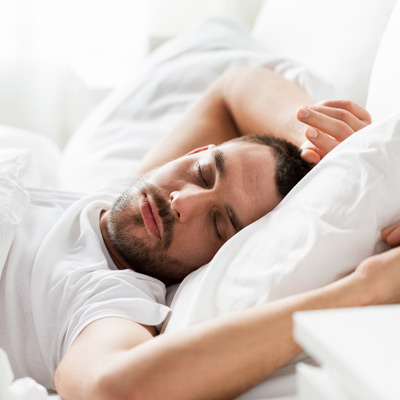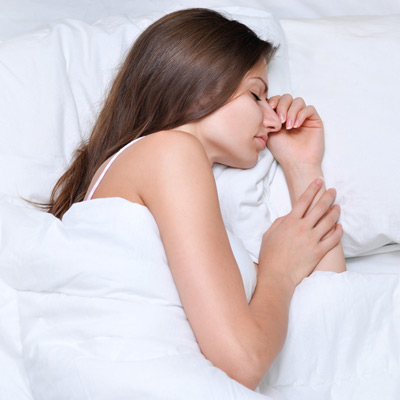What Is The Best Mattress For Back Pain?
05-10-2017

Back pain is one of the most frequently-reported conditions affecting adults with 90% of people experiencing it at some point in their life. It is in fact the leading cause of disability worldwide.
According to the Australian Institute of Health and Welfare, almost 2 in 5 people with back problems said pain “moderately” interfered with daily activities in 2017-18. It’s clearly a big issue and isn’t just a problem among the elderly.
It’s claimed that the majority of back pain issues are caused by either occupational strain (injury) or poor sleep hygiene. By that we mean a poor sleeping posture or an unsuitable mattress that does not provide adequate back support.
If you are 40 years old, you’ve already spent over 13 years sleeping! Whether that time is spent blissfully sleeping —or tossing and turning—is often dependent on your mattress. In fact, your mattress could be the reason you have persistent back pain. Sleeping on the wrong mattress reinforces bad sleeping postures resulting in poor spine alignment, muscle injuries, and eventually, back pain.
In this blog, we will show you the association between a mattress and your back pain and how a memory foam mattress can help alleviate back pain.
 What is the Association between Back Pain and a Mattress?
What is the Association between Back Pain and a Mattress?
First, and foremost, we always recommend that you visit your doctor to determine whether you have a medical condition that is worth addressing. With that ruled out, consider how you sleep and how you wake.
Do you wake up often in the middle of the night feeling sore, stiff, or uncomfortable? When you wake up in the morning, do you feel exhausted for a considerable amount of time? If the answer is yes to any of these questions, you might have bedding or a mattress problem which should be addressed.
However, before giving you more details on how to choose the best mattress for back pain, let’s take a look at some sleeping guidelines. After all, the problem may not just be your mattress, but your poor sleeping habits too!
Sleeping Guidelines to help alleviate back pain.
While there are no absolute rules, there are a few general guidelines about sleeping positions that are most comfortable for your spine;
- Overall, the best sleeping position requires you to lie on your back and have a small pillow tucked under your knees. This method is effective in that it discharges the stress on the spine thus allowing your back to lie naturally.
- For those who prefer sleeping on their side, it is important to have a pillow between the knees. This helps reduce stress on the lower spine and hips.
- Finally, for those who sleep on their stomachs, placing a flat pillow slightly beneath the stomach and hips can effectively reduce the stress on the spine.
While these guidelines are helpful in general, the position that is most comfortable is hugely dependent on individual preference as well as the type of back pain one is having. Your spine and the muscle supporting it should rest well while you sleep. Therefore, a mattress that encourages appropriate alignment, a horizontal sleeping position, and support is essential to reducing and avoiding lower back pain.
 What type of mattress is best for back pain?
What type of mattress is best for back pain?
The right mattress for back pain should have distinct qualities that set it apart from the rest in terms of support, firmness, and conforming ability.
A perfect mattress to relieve back pain should allow the sleeper’s body to remain flat and levelled throughout the sleep period. It should have the perfect balance between softness and rigidity, since support can be incredibly undermined by extra softness or rigidness. To prevent back pain, select a mattress that is free from sagging, and firm enough to offer effective support while sleeping.
b) Mattress Firmness—
Like mattress support, firmness prevents and relieves back pain.
1. Medium Firmness—offers firm support which is conforming and suitable for small sized people. For larger people, for instance a medium size mattress may lack adequate support especially if they are stomach or side sleepers.
2. On the other hand, a firm mattress offers support but a less conforming platform for small and average size people. They are suited for larger people because such persons tend to exert extra pressure on the mattress.
3. Soft Mattress—provides enough support for the small size people, but for average to large size people, soft mattresses may lack the ability to offer adequate support, especially if they opt to sleep on their stomachs or use their sides.
c) Conformity Ability—
A mattress’s conformity ability refers to how well it moulds or conforms to the curves and contours of your body. A mattress with great conformity ability ensures that every part of your body is supported equally. A mattress with poor conformity ability leaves some parts of the body unsupported leading to stress, and ultimately pain.
Why your old mattress could be the cause of your back pain.
So many people opt for the cheap option – usually they are spring-based mattresses like open-coil or pocket-spring mattresses, and these compositions fall short in offering the levels of support and comfort needed during sleep. Over the course of time, this lack of quality will take its toll and become noticeable, whether that be in the form of chronic sleep deprivation, feeling tired in the mornings, or experiencing back and muscle pains. And because these supposedly cheaper mattresses often fail to last longer than 2 years, they easily lose their shape and need replacing more often – cheap mattresses are most certainly a false economy, not forgetting the compromise made on your health.
Let’s not forget you’ll spend one third of your entire life on your mattress, therefore it’s arguably one of the most important purchases you’ll ever make. The quality of your mattress has a significant effect on your overall health and general wellbeing, both in the short term and the long term, and there is a worryingly-widespread ignorance towards the consequences of sleep deprivation – it makes zero sense to keep an old mattress and settle for anything other than a premium mattress.
 Why a Memory Foam Mattress is good for back pain
Why a Memory Foam Mattress is good for back pain
A mattress to help alleviate back pain should factor in support and comfort in its design. It should balance in all aspects of rigidity and softness, be able to support your weight, and possess conformity ability. Of all the mattresses in the market, none factor in support, firmness, and conformity properties as well as memory foam mattresses. In our opinion they are the most suitable for people suffering from back pain.
You only need to look at the origins of the memory foam mattress to realise how well-suited it is for someone suffering with back pain. Memory foam was invented via a NASA-commissioned research programme aimed at developing a padding concept to improve crash protection in aircraft. They eventually created an ultra-soft padding which could also absorb a high amount of energy, offering both protection and comfort. However, the researchers soon discovered that the foam they had come to create had much more potential in the healthcare industry, as a means to provide optimum comfort for bedridden patients. This became a reality soon after in the 1980’s, and memory foam was applied to various medical contexts, such as wheelchair seat cushions, hospital pillows, x-ray tables, padding for sufferers of chronic neck pain, as well as of course mattresses.
Memory foam mattresses are the most recommended type of mattress when it comes to providing support for those suffering from back pain. One of the factors that make foam mattresses unique is their ability to cradle the body while providing enough support to the back’s muscular and bone structures. This tremendously improves your sleep quality, reduces muscle soreness in the morning, and lowers chances of developing chronic back pain.
Traditionally, spring mattresses make the sleeper lay uneven, regardless of whether they are back or side sleepers. This compels the person’s spine to arch, and the inner knee becomes unsupported which causes pains and strains.
Memory foam mattresses tend to perform well because they provide support in the places that need it. The shoulders and hips are cushioned, while the lower back is able to relax and be fully supported. Memory foam mattress can also help ease the pain and pressure points related to fibromyalgia. They aid in the alignment of the vertebrae, reducing the muscle tension and help in natural body processes.
However, a word of warning not all memory foam mattresses can help alleviate back pain – there are many imitators on the market, some of which are just solid blocks of sponge, or very low-density memory foam. High density visco-elastic foam is soft enough to mould itself to your body shape, but also supportive enough (not spongey like low-end ‘memory foam’) to maintain your body’s posture, and more relevantly, the shape of your spine. You can read more about the difference between cheap vs premium memory foam here.
Why you should take your back pain seriously and consider a Memory Foam Mattress.
Back pain remains one of the main reasons why people begin to lose their mobility in middle age. Lower back pain can keep you from engaging in physical activities, maintain a healthy weight, and keep up with your stamina, balance, and strength. If a mattress is one of the factors that cause your back pain issue, it is really important that it is replaced.
Understanding the physical components of a mattress, such as whether the mattress offers a back support, the availability of balance between support and comfort, and personal preference are some of the key things to consider while choosing a mattress to address back pain.
And while determining the perfect or single best mattress remains a hotly debated topic, sleep professionals, and opinion polls have indicated that memory foam mattresses are better than others when it comes to pain management and support. Memory foam mattresses because of the way they contour to your whole body provide deeper and more restorative sleep.
Shop our Memory Foam Mattress today and experience the difference.
Our Ergoflex 5G Memory Foam Mattress is ideal for people who suffer from back pain. The Ergoflex mattress was meticulously designed to deliver optimum posture support and is recommended by Australia’s back doctor, Dr Mark Craig, as one of the ways to manage back pain.
Further Reading
If you enjoyed this article you will find the below of interest:
Introducing the all-new Ergoflex 5G Memory Foam Mattress
How much sleep does your star sign need?
The utlimate Sleep Guide: 50 Sleep Tips & Tricks
